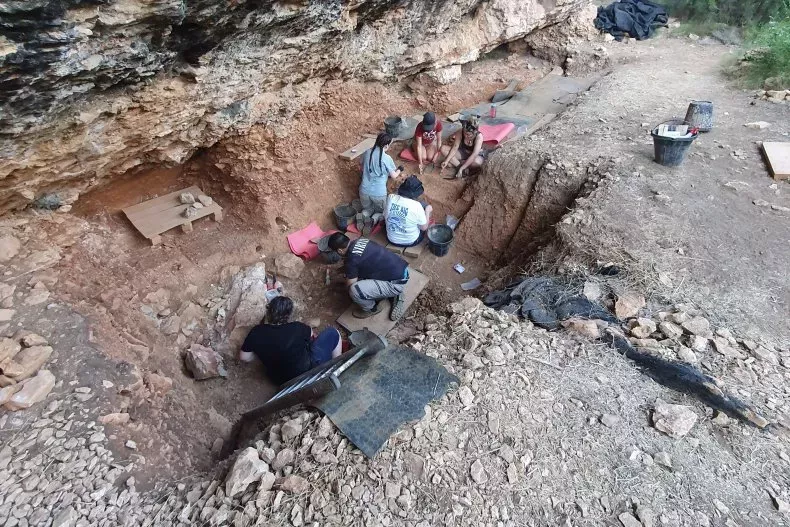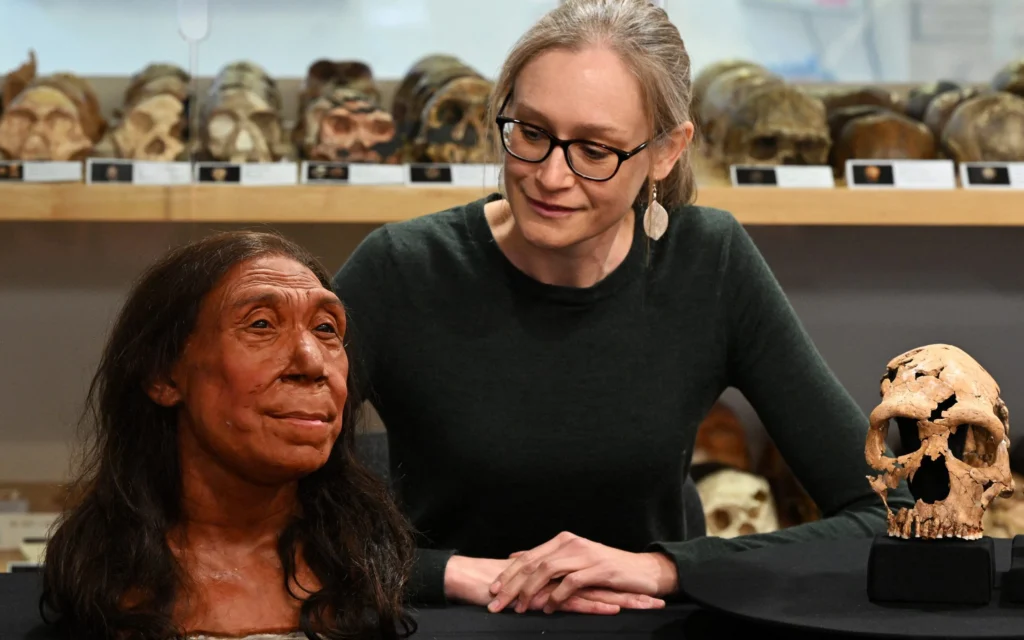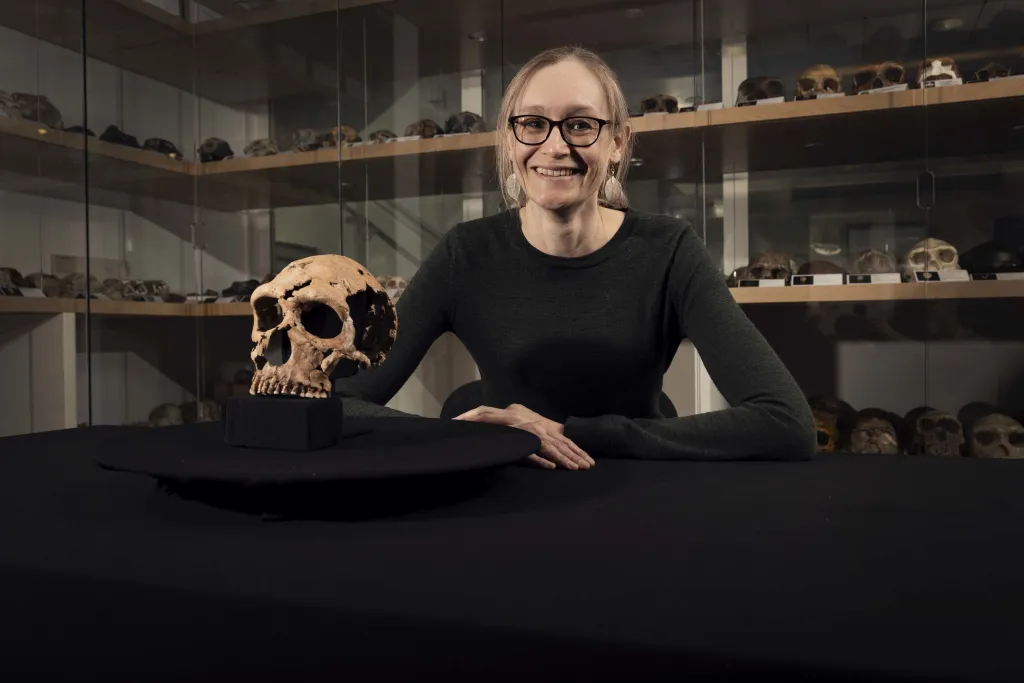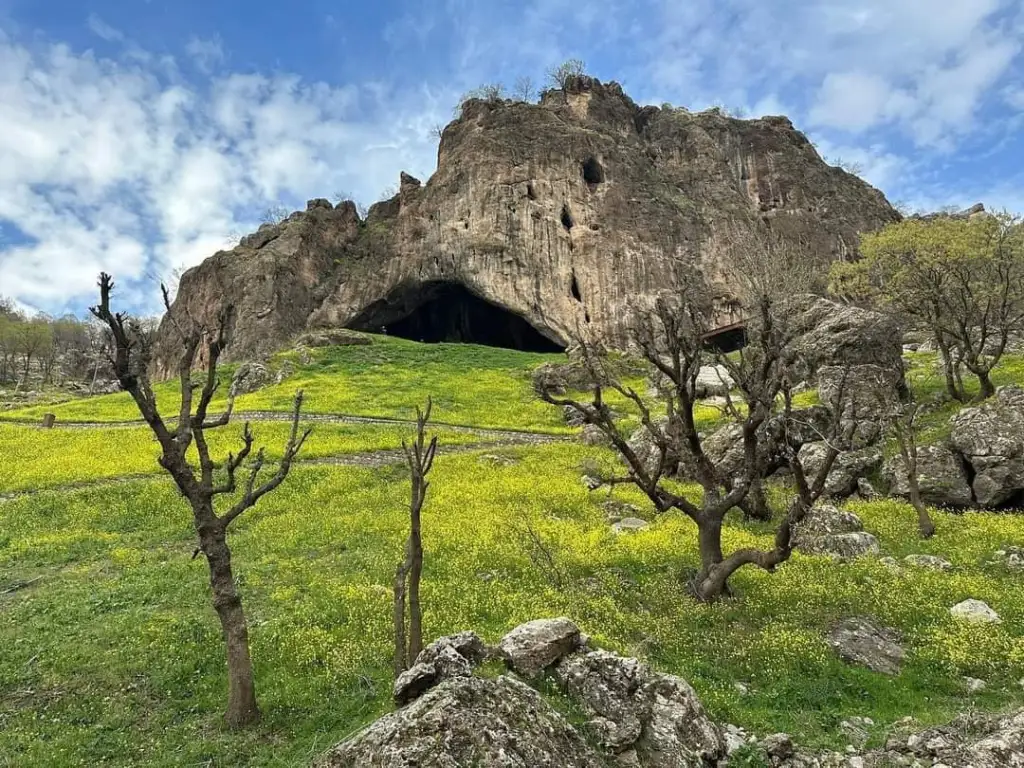Recent archaeological excavations at Abric Pizarro in Spain and Shanidar Cave in the Kurdistan Region of Iraq have uncovered groundbreaking insights into Neanderthal behavior, challenging long-standing perceptions of these ancient humans. At Abric Pizarro, researchers found evidence of a diverse diet and sophisticated tool-making skills, while the discovery of the 75,000-year-old Neanderthal woman, Shanidar Z, has ignited discussions on Neanderthal burial practices and their possible cultural significance. These findings are reshaping our understanding of Neanderthal life and their eventual disappearance around 40,000 years ago.
A New Look at Neanderthal Behavior at Abric Pizarro
The archaeological site of Abric Pizarro, nestled in the southern Pyrenees of Spain, has revealed surprising details about Neanderthal life, challenging previous assumptions. This site, dating back between 100,000 to 65,000 years ago, offers a rare glimpse into the Middle Paleolithic period, specifically during the Marine Isotope Stage 4 (MIS 4). Researchers from the Australian National University (ANU) have discovered a treasure trove of artifacts, including stone tools and animal bones, providing significant data on how Neanderthals adapted to their environment.

Contrary to the outdated stereotype of Neanderthals as slow-moving, primitive beings, the evidence from Abric Pizarro suggests they were highly adaptable and resourceful. Dr. Sofia Samper Carro, the lead archaeologist on the project, explains that Neanderthals were not only resilient in harsh climatic conditions but also adept at exploiting their surroundings. The variety of tools and the diversity in diet found at the site indicate a level of sophistication previously underestimated.
One of the most striking discoveries at Abric Pizarro is the evidence of Neanderthal dietary flexibility. The animal bones found at the site reveal that Neanderthals hunted a range of animals, from large game like red deer and bison to smaller prey such as freshwater turtles and rabbits. The presence of cut marks on the bones provides direct evidence of their hunting and processing skills, showcasing their ability to plan and adapt to different food sources. This challenges the widely held belief that Neanderthals primarily hunted large mammals and suggests they had a more varied diet than previously thought.
Sophisticated Tool Use and Environmental Adaptation
The stone tools uncovered at Abric Pizarro further emphasize the Neanderthals’ ability to adapt to their environment. The tools exhibit a range of types and uses, indicating that Neanderthals were capable of making and using different tools depending on the available resources. This versatility in tool-making challenges the notion that Neanderthals were less capable than modern humans in utilizing their environment to its full potential.
The precise excavation techniques employed at Abric Pizarro have allowed researchers to gather exceptionally accurate data. Each artifact, whether stone tools, bones, or hearths, is meticulously plotted in 3D, providing a detailed record of the site. This approach not only helps in understanding how Neanderthals lived but also offers insights into how long they stayed in a particular area. By analyzing the spatial relationships between different types of artifacts, the researchers can piece together the daily lives of Neanderthals, from their hunting strategies to their settlement patterns.
The research conducted at Abric Pizarro is part of a broader effort to understand Neanderthal behavior across Europe. The findings from this site are particularly significant because they provide evidence of how Neanderthals lived in a region where modern humans had not yet arrived. This period, just before the arrival of Homo sapiens in Europe, is crucial for understanding the eventual disappearance of Neanderthals around 40,000 years ago.
Shanidar Cave: Uncovering Neanderthal Burial Practices
In a parallel discovery, the excavation of Shanidar Cave in the Kurdistan Region of Iraq has revealed the reconstructed face of a 75,000-year-old Neanderthal woman, dubbed Shanidar Z. This find has reignited discussions about Neanderthal cultural practices and their potential similarities to modern humans. The University of Cambridge, which led the excavation, has unveiled the reconstructed face, challenging the long-standing perception of Neanderthals as primitive and unsophisticated.

The remains of Shanidar Z were discovered in Shanidar Cave, a site that has been of archaeological interest since the 1950s. The cave, located in the Zagros Mountains, was first excavated by American anthropologist Ralph Solecki, who uncovered the partial remains of ten Neanderthals. These discoveries have since become central to debates about Neanderthal behavior, particularly in relation to burial practices.
One of the most controversial aspects of Shanidar Cave is the so-called “flower burial,” where Solecki found ancient pollen clumped in the sediment around one of the bodies. This discovery led to the hypothesis that Neanderthals might have practiced burial rites, including the laying of flowers on their dead. The idea that Neanderthals engaged in such human-like rituals has been both supported and contested over the years, with the recent findings at Shanidar Cave adding new evidence to the debate.
Reconstructing Shanidar Z: New Technologies, New Insights
The reconstruction of Shanidar Z’s face was made possible through advanced scientific techniques, including CT scanning and 3D modeling. The University of Cambridge team pieced together the skull, which was found flattened by thousands of years of sediment. This meticulous work has allowed researchers to create a digital reconstruction of Shanidar Z, offering a vivid glimpse into what Neanderthals might have looked like.
The reconstruction has also provided new insights into the physical characteristics of Neanderthals. Shanidar Z was an older adult, with teeth worn down from years of use. The skull’s petrous bone, a dense part of the skull behind the ear, was found to be intact, preserving potential ancient DNA. This discovery is particularly exciting because it could provide genetic data from a region where Neanderthal DNA is rare, offering new information on their relationship with modern humans.

The potential for extracting ancient DNA from Shanidar Z could help answer some of the lingering questions about Neanderthal extinction. While theories range from competition with modern humans to climate change, having genetic data from Neanderthals in Southwest Asia could shed light on the role interbreeding played in their disappearance. It is already known that all non-African humans carry a small percentage of Neanderthal DNA, and new evidence could reveal more about how these interactions occurred.
The Cultural Significance of Shanidar Cave
The significance of Shanidar Cave extends beyond its archaeological value; it holds cultural importance for the Kurdish people and has the potential to become a UNESCO World Heritage site. Graeme Barker, a professor of archaeology at the University of Cambridge, emphasizes that the discovery of Shanidar Z has brought renewed attention to the deep heritage of the Kurdish region. Barker and his team hope that their findings will support the case for Shanidar Cave to be recognized as a world heritage site, highlighting its importance not just to the scientific community but also to the local population.
The excavations at Shanidar Cave are part of a broader effort to understand Neanderthal behavior and their eventual extinction. By reopening the trenches first excavated by Solecki, the team has been able to gather new evidence that was previously unattainable due to the limitations of mid-20th-century technology. The discovery of Shanidar Z, along with the new data collected from the site, is helping to paint a more nuanced picture of Neanderthal life.
Redefining Our Understanding of Neanderthals
The discoveries at Abric Pizarro and Shanidar Cave are reshaping our understanding of Neanderthals, challenging the long-held view of them as primitive and unsophisticated. The evidence of dietary flexibility, sophisticated tool use, and potential burial practices suggests that Neanderthals were far more similar to modern humans than previously thought. These findings not only provide new insights into Neanderthal behavior but also raise important questions about their interactions with early Homo sapiens and their eventual disappearance.
As researchers continue to analyze the data from these sites, our understanding of Neanderthals is likely to evolve further. The work being done at Abric Pizarro and Shanidar Cave is not just about uncovering the past; it is about redefining what it means to be human and understanding the complex history of our ancestors. The meticulous excavation techniques and advanced technologies used in these studies are opening new doors to the past, offering a deeper and more nuanced view of Neanderthal life.
These findings remind us that the story of human evolution is far from complete. With each new discovery, we come closer to understanding the rich and complex history of our species, and the role that Neanderthals played in shaping it.


